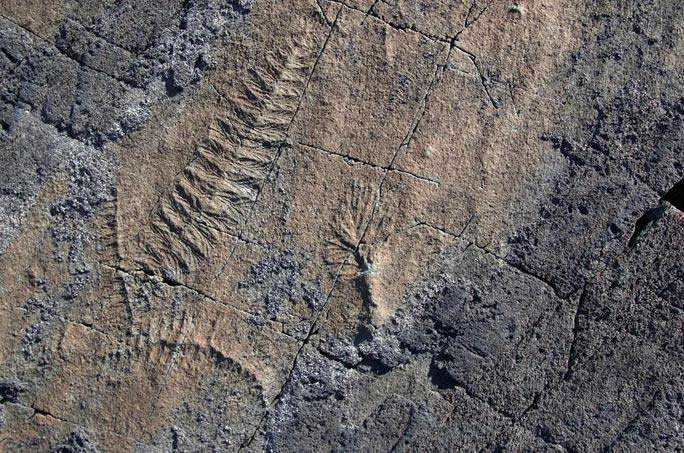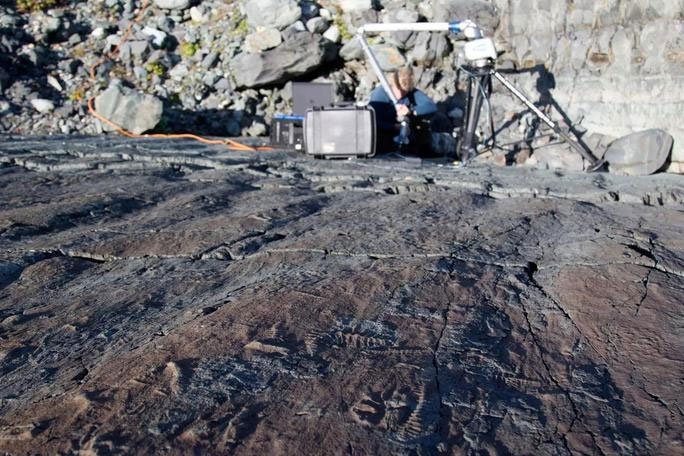A study from the University of Cambridge, UK, has unveiled the mysteries of the Ediacaran period of the Phanerozoic Eon: it was a densely populated world of bizarre creatures that faced a major extinction event.
Two paleontologists, Rebecca Eden and Emily Mitchell, with the support of several colleagues at Cambridge, sought evidence for what is known as the “Ediacaran mass extinction.”
Previously, scientists believed that the Cambrian explosion laid the foundation for Earth’s animal kingdom, even though the first animals emerged during the Ediacaran period beforehand. However, the analysis of the structure of three fossil assemblages from the last 32 million years of the Ediacaran period revealed that there was another biological explosion, occurring much earlier.

A group of Ediacaran specimens at the Mistaken Point Ecological Reserve, Newfoundland, Canada – (Photo: PLOS BIOLOGY)
According to SciTech Daily, scientists relied on data from ancient environments, including ocean depths and rock characteristics, to identify fossil assemblages that still bear traces of ancient organisms.
The data revealed increasingly complex community structures during a time when it was previously thought that animals were still simple and scarce. Species became more specialized from the Ediacaran, engaging in more interactions among themselves, indicating a remarkable ecological evolution.
More chillingly, the cause of the Ediacaran mass extinction was not a sudden disaster like most other mass extinctions, but rather resulted from competition among species: the Ediacaran period was a true world of monsters, where bizarre and unimaginable organisms eliminated each other, leading to an “apocalypse.”

Researching fossils at the Mistaken Point Ecological Reserve, Newfoundland, Canada – (Photo: PLOS BIOLOGY)
Thus, after witnessing the spectacular first biological explosion on Earth with the emergence of primitive animals around 580 million years ago, the Ediacaran period ended about 543 million years ago with a rather sparse remaining population, not because the animals of that time were less evolved, but because they had effectively made each other “evaporate.”
Many species truly “disappeared” from the phylogenetic tree, but the survivors were sufficient to lay the groundwork for the subsequent Cambrian period—a time that witnessed the emergence of many monstrous species, still fierce and fiercely competitive, but not to the extent of causing mass extinctions.
This research has been published in the scientific journal PLOS Biology.


















































